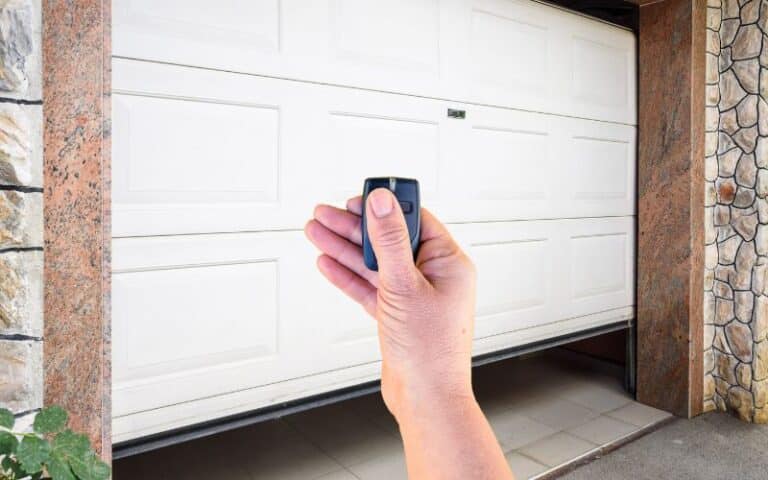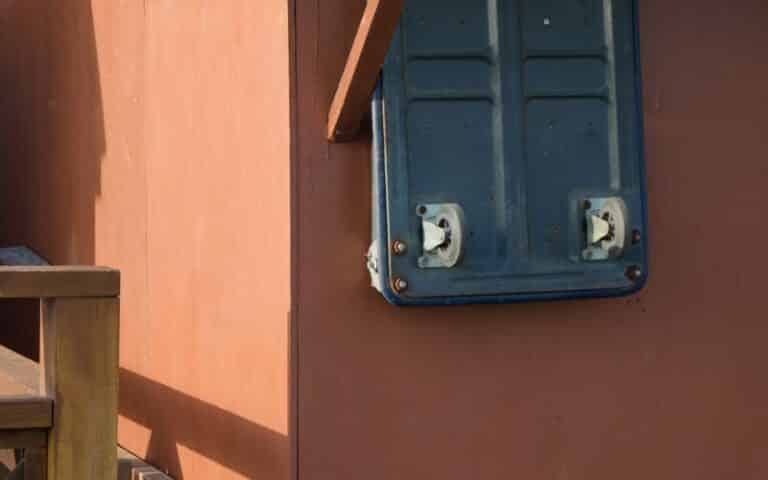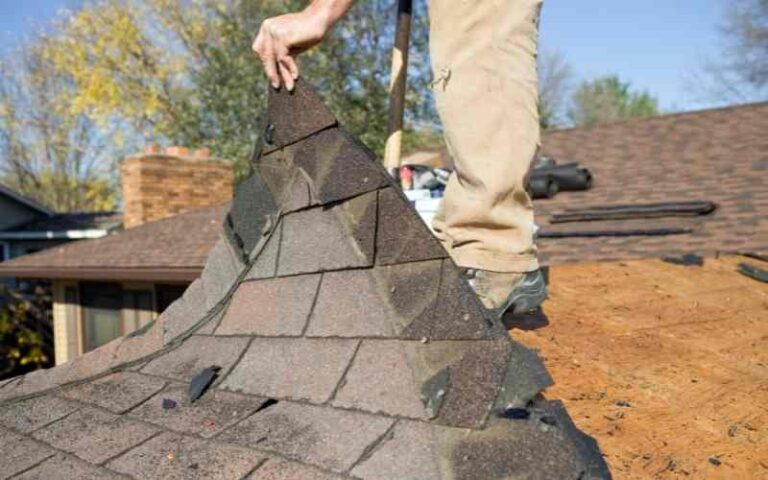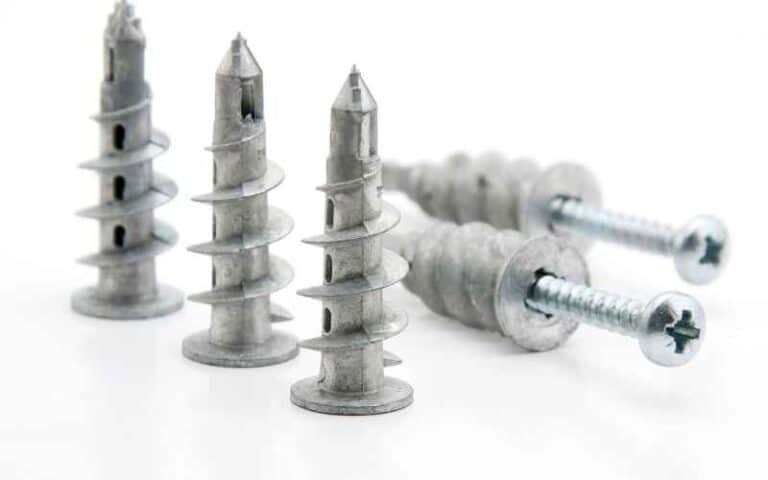Hip roofs are distinctive. Hip and gable roofs are common roof types. Gable roofs are similar to hipped roofs, but some significant differences exist.
Gable and hip roofs differ in shape; two sides of a gable roof slope down, but all four sides of a hip roof slope down.
When it comes to roofing, there are a lot of different options available. One type of roof that you may come across is a hip roof.
Hip roofs are a type of protection roofing system with a sloped surface. This type of roof differs from a gable roof or a hip jack rafter.
When deciding if hip roofs have rakes, it depends on the specific style of a hip roof.; some styles will have rakes, while others will not. One hip-roof style is known as a “butterfly hip roof.” This type of hip roof has no rakes and resembles a butterfly, while other styles include gambrel and mansard.
Ready for a Roofing Quiz?
Where Are the Rakes on a Roof?
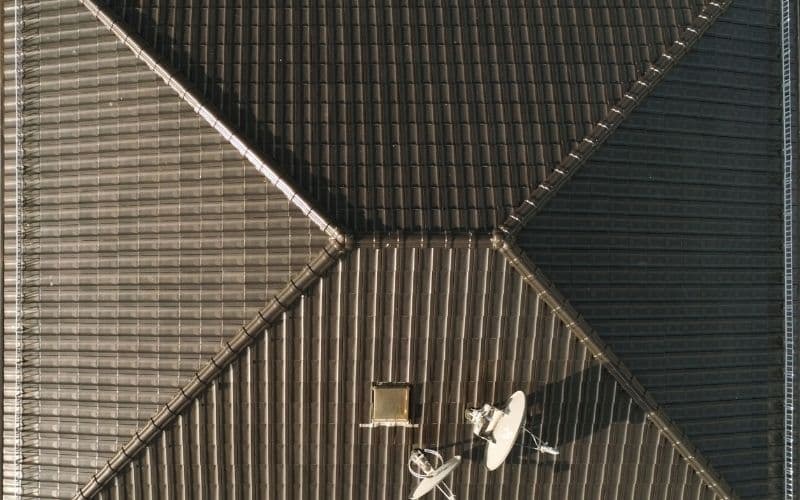
The rake is the roof’s edge that runs from the eave to the ridge; you generally find it on gable roofs, but you can also find it on hip roofs.
The rake protects the roofing system and helps shed water and snow. Usually, rakes are made of two rafters on a gable roof, called a hip jack rafter.
Rakes are an integral part of the protection roofing system. The hip jack rafter is the triangular piece of lumber that forms the hip and has a top and bottom chord.
The bottom chord is usually longer than the top and has a short end cut at an angle. You fasten the long end of the bottom chord to the wall plate with nails or screws.
The rake provides additional protection for your roofing system. You must ensure that you don’t have holes in your rake, as they can let water into your home.
If you find a hole in your roof, you must fix it immediately before further damage occurs.
A roof rake’s placement is one of its most essential features. If you’re building a new home or working on improving an existing one, you must get it right.
It all comes down to balance and composition. It would be best to position your roof’s rafters at right angles to gable roofs, creating a triangle or pitch.
It prevents your roof from sagging in its center and ensures that water won’t pool on top of it. It’ll also give you enough room to install gutters around your house.
On hip roofs, it’s also essential to position your roof’s rafters at the right angles. It will allow you to install gutters on one side of your house and a ridge vent on the other.
It’ll also balance out your home’s appearance, giving it a symmetrical look from all sides. A hip roof will look crooked and unappealing without rafters placed at an angle.
What Does a Hip Roof Have?
The slopes on all four sides of a hip roof are the same length. The hips are the ridges that run along the roof’s edges and intersect at the top.
Gable roofs aren’t as stable as hip roofs, with only two walls supporting the roof’s weight. The hip roof’s extra support can withstand high winds and heavy snowfall.
A hip roof has four sloping sides at the top, typically at a ridge. The hips are the sides that slope down and away from the ridge.
The gable roof is the two sides that tilt up and toward the ridge. The angle of the hips is usually different from the angle of the gables, which creates a more complex roof design.
A hip roof has four sloped sides that meet at the top to form a ridge. Two sloped sides of a gable roof meet at the top to form a ridge.
The main difference between a gable roof and a hipped roof is that all sides slope down over your home’s walls in a hipped roof, while gable roofs have two sides or peaks that slope down toward your house.
A hip roof combines a gable roof with a lean-to and often has two more sides that lean inwards towards each other, creating two more angles of inclination.
There is no set angle for a hip roof, but it’s common for them to be between 30° and 45°. Hip roofs usually have fewer walls, which makes them a better choice for large rooms.
Which Type of Roofs Have Rakes?
All roofs can have rakes, but they are most commonly found on the gable, shed, and hip roofs.
Rakes are a roof’s horizontal edges extending beyond the roof’s main body, and they usually form a triangle shape and are found on the sides of a roof that slopes down.
Rakes can be decorative or functional, often used to add ventilation or drainage to a rooftop.
Rakes are a roof’s vertical edges extending beyond the roof’s main body. They help to deflect water and snow away from the building and can also add architectural interest.
Gable roofs are the most common type of roof in the US, and they usually have two sloped sides that come together at a ridge in the middle of the roof.
Gable roofs typically have triangular gables at the ends; on the other hand, hip roofs have four sides that slope down and meet at the top of the roof.
Gable roofs aren’t as stable as hip roofs, and you often use them in homes in hurricane-prone areas.
A gable roof typically has two rakes. A gable roof has two wall sections with a space between them, creating a triangular-shaped design at the top of the structure.
You can find gable roofs on single-story buildings and tiny multi-family homes. A hip roof is an angled roof that has three wall sections.
Each wall section meets at a ridge at a steep angle with two rakes. You can find hip roofs on many structures, from single-story homes to large multi-family and commercial buildings.
Hip Roof Parts
Four slopes define a hip roof. The eaves are the two sides that slope downwards and away from the ridge; the other two slope upwards and towards the ridge; this is where all four sides of the roof meet, and it is the roof’s peak.
The following are parts of a hip roof:
| Parts | Definition |
|---|---|
| Hip | The formation of the exterior angle is when adjacent sloped sides of a roof meet to create what is known as the hip. The degree of this angle is called the hip bevel. |
| Hip end | When hips meet at a roof’s ridge, they form a triangle-shaped slope called a hip end. |
A hip roof has four different kinds of rafters: ridge, hip, jack, and common beam. The ridge beam runs straight across the top of the roof, and the other rafters hold it in place.
The four hip rafters start at the roof’s four corners and join to the ridge beam.
The common rafters are the full-length, uncut rafters that hold up most of the roof and connect to the ridge board.
A gutter can be put around a hip roof because the fascia is usually level all the way around. Most hip roofs have sloped sides on the dormer.
Conclusion
In conclusion, hip roofs are roofs that slope up from all sides of a building, have no vertical ends, and provide protection for your roofing system.
Some hip roofs have rakes, while some do not. Knowing what you want with your home depends on you, so having a rake in it isn’t necessary.

